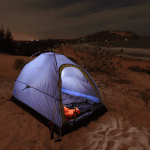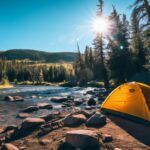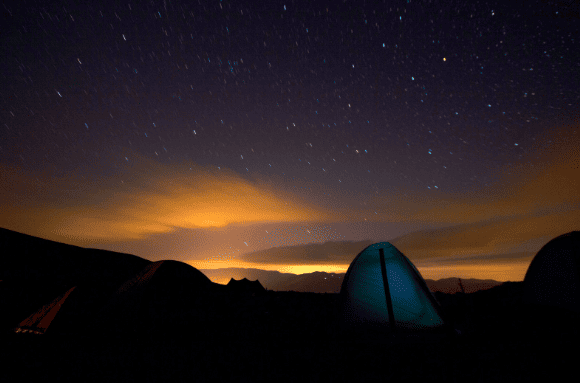
Picture this: you’re venturing into the great outdoors, backpack filled with essentials, ready to connect with nature. But there’s an art to making the most out of this adventure, and it starts with picking the perfect spot to set up your tent. This is not just about finding a flat surface; it’s about ensuring safety, comfort, and an unforgettable experience under the stars. Let’s explore the six key factors to consider when selecting the ideal campsite.
Flat and Stable Ground
The first step is to find a flat and stable area for your tent. This ensures a comfortable night’s sleep and prevents you from rolling around inside your tent. Avoid slopes or hillsides where water might flow in case of rain. Look for a spot that’s level and free from rocks, roots, or any sharp objects that could damage your tent or make sleeping uncomfortable.
Proximity to Water Sources
Having a water source nearby is essential for drinking, cooking, and cleaning. However, setting up your tent right next to a river, lake, or stream isn’t ideal. Keep a safe distance (about 200 feet) to protect water sources from contamination and to avoid the risks of flooding or attracting wildlife.
Consideration for Wind and Weather
The direction of the wind can make a big difference in your camping experience. Set up your tent so that the entrance is facing away from the wind. This reduces the amount of wind entering your tent, keeping it warmer and more stable. Also, consider the possibility of sudden weather changes. Avoid open spaces that could leave you exposed to strong winds or lightning.
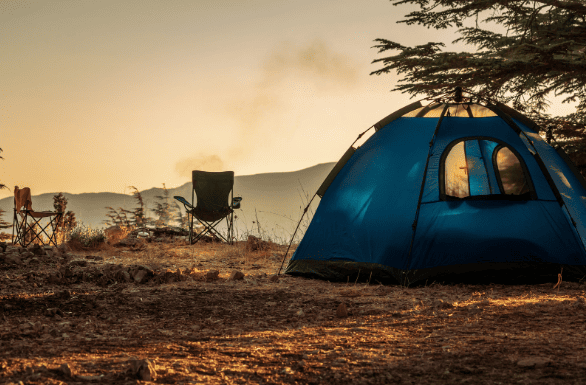
Shade and Sunlight
Think about how the sun travels during the day. Setting up in a spot that offers morning sunlight can warm you up from a chilly night. However, too much sun, especially in the afternoon, can turn your tent into a sauna. Look for a balance, perhaps under light tree cover that provides shade but isn’t a hazard during strong winds or storms.
Safety from Wildlife
Safety is paramount. Your campsite should be safe from wildlife encounters. Avoid areas with signs of animal activity like tracks or droppings. Store your food properly, away from your sleeping area, to prevent attracting animals. Be aware of the local wildlife and any specific precautions you should take.
Environmental Impact
Adhering to Leave No Trace principles is essential for responsible camping. Choose a previously used site to lessen environmental impact. Refrain from disturbing vegetation and rocks. The aim is to relish nature’s beauty while ensuring it remains unspoiled for future visitors. This approach helps in preserving the natural surroundings for others to enjoy long after your adventure concludes.
Accessibility and Proximity to Trails
Ease of access is a significant factor. Your campsite should be close enough to established trails or access points, making it easier to find and return to. However, it shouldn’t be so close that you’re disturbed by other hikers or campers passing by. The ideal distance offers both convenience and privacy. Also, consider how easy it is to reach emergency services or exit points in case of an unforeseen situation.
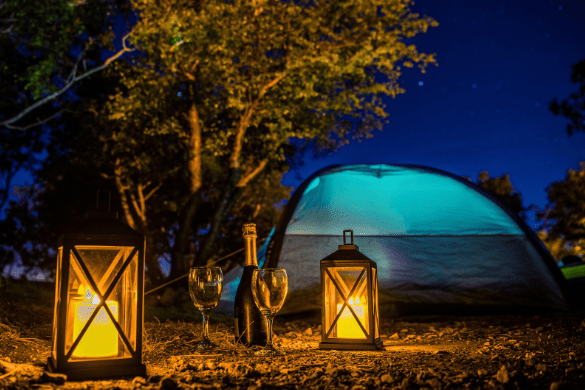
Ground Cover and Soil Composition
The type of ground cover and soil composition can greatly affect your camping experience. Soft grassy areas are ideal for comfort, but they can become muddy and waterlogged in rain. Sandy or gravelly areas might provide good drainage but can be hard and uncomfortable to sleep on. Look for a balance – ground that is soft enough for comfort but firm and well-drained to handle weather changes.
Respect for Fellow Campers
Consideration for others is vital in shared camping areas. Your perfect spot should not intrude on the privacy or space of other campers. Be mindful of noise levels and light pollution from your campsite. If you’re camping in a group, make sure your setup does not sprawl into others’ space. This mutual respect ensures a pleasant experience for everyone in the area.
Conclusion
Selecting the right campsite is an essential part of any camping trip. It’s not just about the view or convenience; it’s about ensuring your safety, comfort, and minimizing your impact on the beautiful environment around you. By considering these six factors, you can find a spot that not only serves as a temporary home in the wild but also enhances your overall camping experience. Remember, the perfect campsite is out there, waiting for you to discover it. So pack your gear, respect nature, and embark on a journey to find that ideal spot under the stars!

